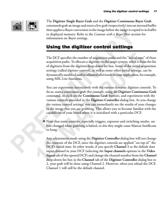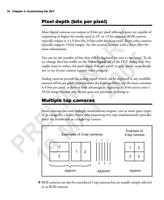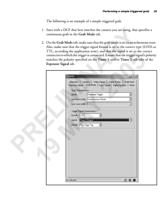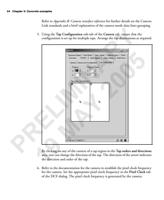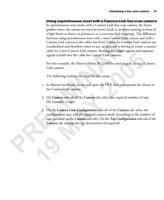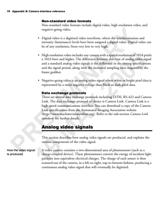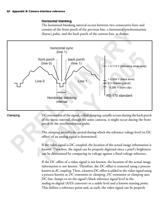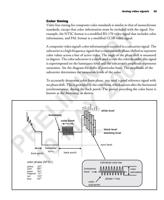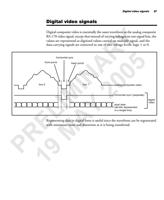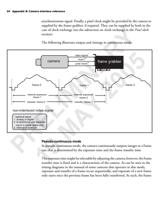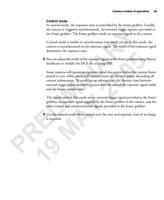
94 Appendix B: Camera interface reference
synchronization signal. Finally, a pixel clock might be provided by the camera or
supplied by the frame grabber, if required. They can be supplied by both in the
case of clock exchange (see the subsection on clock exchange in the Pixel clock
section).
The following illustrates output and timings in continuous mode:
RY camera
video signal1
vsync*2
pixel clock*3
frame grabber
INA 05 frame0
0 internal exposure:
frame 1
IM 2 transfer: frame 0
non-interlaced video signal
L Y * optional signal
1. analog or digital
2. bi-directional and separate
vsync in some cases only
E A 3. internal or external
frame 1
internal exposure:
frame 2
transfer: frame 1
frame 2
R M Pseudo-continuous mode
In pseudo-continuous mode, the camera continuously outputs images at a frame
rate that is determined by the exposure time and the frame transfer time.
P 9The exposure time might be selectable by adjusting the camera; however, the frame
1transfer time is fixed and is a characteristic of the camera. As can be seen in the
timing diagrams in the manual of some cameras that operates in this mode,
exposure and transfer of a frame occur sequentially, and exposure of a new frame
only starts once the previous frame has been fully transferred. As such, the frame

















